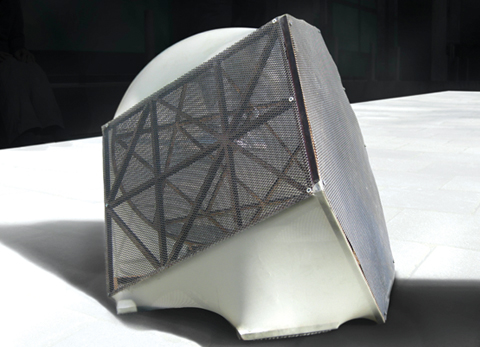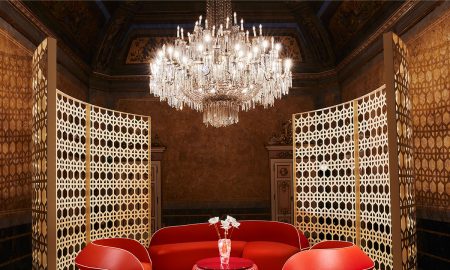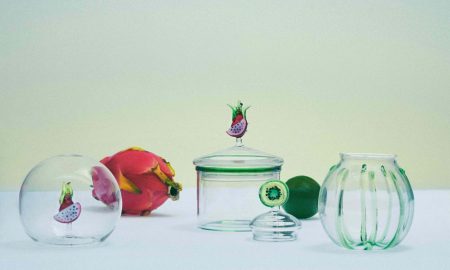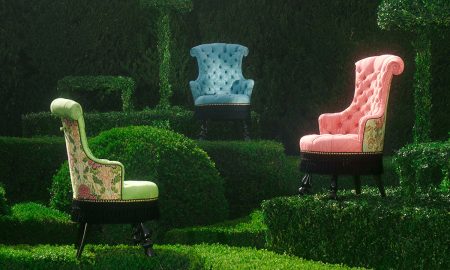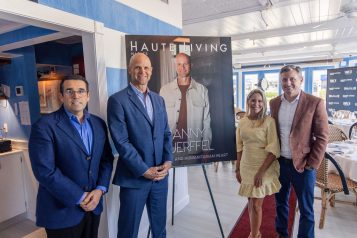What would one expect from the daring genius that has defined Rem Koolhaas’ innovative architecture? How about a large-scale, shape-shifting venue that serves as a cultural pavilion and can be flipped on four different sides, altering its interior space based on the presenting exhibition?
Prada commissioned OMA (Office for Metropolitan Architecture)/Rem Koolhaas to design such a project, titled The Prada Transformer, which combines the four sides of a tetrahedron—hexagon, cross, rectangle, and circle—into one artistic site. The base of each shape serves a specific exhibition medium. A fashion exhibit will be held in the pavilion when the hexagon is the ground floor. When the cross serves as the foundation, the venue will host an art exhibition. The rectangle flooring houses the cinema, and the circle will serve as a special events venue.
For Prada, breaking out of the common molds and creating distinctive designs and silhouttes has been a long-standing philosophy that catapulted their brand to the top of the international fashion charts.
Prada detailed the multidimensional event space, explaining that each side’s layout plan is precisely designed to organize a different event installation, creating a building with four distinct identities. Whenever one shape becomes the ground plan, the other three shapes become the walls and the ceiling, thus defining the space. Employing the use of construction cranes, the structure is rotated and thereby reconfigured so that the venue and experience varies based on the presenting program. The edifice is covered with a smooth elastic membrane that is not marred by the movement.
In an intimate meeting with international design reporters, the demigod of design explained, “Instead of doing one pavilion for one event, [the proposal was] to actually accommodate four different events in a single pavilion and that became the trigger for the architectural concept.”
The divine design is set to launch in Seoul, Korea, at the end of April and for five months will serve as the host site for various visual arts exhibitions. First up will be “Waist Down – Skirts by Miuccia Prada,” which will open on April 25. The project displays skirts in motion from the House of Prada’s debut show in 1988, up through present day couture fashions.
The cranes will then move into action, spinning the space so that the rectangle hits the ground. In this cinema space, Babel director Alejandro González Iñárritu will present a selection a films in a work titled “Flesh, Mind and Soul.” Launching on June 26, this program will be co-curated by film critic Elvis Mitchell.
Another rotation means another exhibition; this time the Prada Transformer will spin to prepare for “Beyond Control,” a collection of contemporary art pieces curated by Germano Celant. Additioinally, an art installation by Swedish artist Nathalie Djurberg, entitled “Turn Into Me” (2008-2009), also curated by Celant, will be presented. This installation will consist of several, three dimensional constructions inside of which provocative and ironic short animated video works will be projected onto video screens. Further line-ups on the agenda will be announced in coming months.
The site of the spinning venue is located next to next to the 16th century Gyeonghui Palace in Seoul, Korea, making the supreme statement in contradiction between traditional, old-world Korea, and neoteric design of the 21st century. “I really like the ambiguity of something which is, frankly, Western, in the closeness to something which is so Asian,” said Koolhaas. He went on to explain how the blob has dominated architectural designs for quite some time, so he created the Prada Transformer, with its series of precise and recognizable, hard architectural shapes, to break the mold and serve as a modern anti-blob.
For Prada, breaking out of the common molds and creating distinctive designs and silhouttes has been a long-standing philosophy that catapulted their brand to the top of the international fashion charts. Their commission of OMA/Rem Koolhaas for the Prada Transformer signifies their commitment to serving as the lead, not only in fashion, but in art and architecture as well, projecting their mission light-years into the future.







